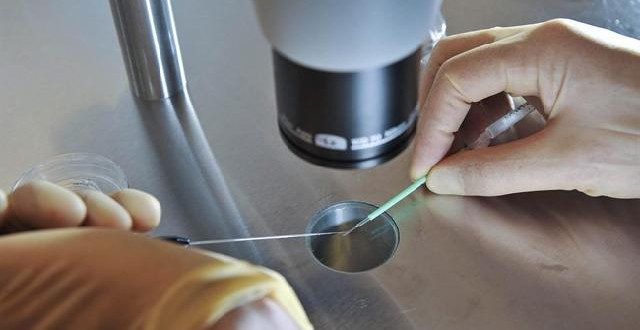Recent study finds the cost for a single baby born to a woman aged 40 and older ranges from $45,000 to over $100,000 under Quebec’s funded IVF program.
Starting in August, 2010, the Quebec health-care system began funding IVF for women of any age in the province. It was left to individual clinics to establish cutoffs; some stopped offering the treatment at age 42, while others drew the line at 43 or 44. Last year, citing costs, the province moved to dramatically reduce its coverage.
Dr. Neal Mahutte of the Montreal Fertility Centre, along with colleagues at McGill University, the University of Montreal and other private clinics, used data provided through the Canadian Assisted Reproductive Technologies Registry to determine how much it actually cost to achieve a live birth in women over 40.
The researchers tallied up the costs of stimulating the ovaries, retrieving the eggs, fertilizing them and transferring them into the uterus, and then divided that by how many children actually resulted.
In women under age 35, the average cost per child born was $17,919.
In 40-year-olds, however, that figure leapt to $43,153. And it continued to rise: $62,290 at age 41, $79,100 at age 42 and $103,994 at age 43. The province spent almost $600,000 on IVF in women aged 44, but not a single child was born to a woman in that age group.
Their figures don’t include the costs of IVF drugs, pregnancy care or birth.
All of the women in the study used their own eggs.
“If you’re looking at this as an investment of public funds, you have to say at a certain point that we can’t afford to do this,” Mahutte said in advance of the presentation. “Do you stop at 40 or 42 or 43? You do need to stop somewhere.”
It is a lesson that the Ontario government seems to be heeding: In its IVF funding announcement earlier this month, Health Minister Eric Hoskins made it clear that Ontario women would become ineligible for funding as of their 43rd birthday.
Ontario has also avoided another of Quebec’s pitfalls by changing the way a cycle of IVF is defined. In Ontario, one cycle will mean one harvest of eggs from the ovaries and whatever pregnancies a woman can achieve from that. In Quebec, one cycle meant one transfer – a procedure where embryos are placed into the uterus.
The difference is important, because many older women have trouble producing viable eggs that develop into healthy embryos, so it could take many harvests before there are any embryos to transfer. But because no embryos were transferred, under the Quebec program, those cycles didn’t count. Women could, and did, go back again and again, Mahutte said.
Researchers say the publicly funded IVF program has had another positive effect — raising the province’s live birth rate by almost 0.8 per cent — “a very significant increase,” said Dahan.
Quebec’s fertility rate in 2011 was close to the national average of 1.61 children per woman, according to the most recent figures from Statistics Canada, but fell below the two children needed to maintain population levels without immigration.
Agencies/Canadajournal
 Canada Journal – News of the World Articles and videos to bring you the biggest Canadian news stories from across the country every day
Canada Journal – News of the World Articles and videos to bring you the biggest Canadian news stories from across the country every day



